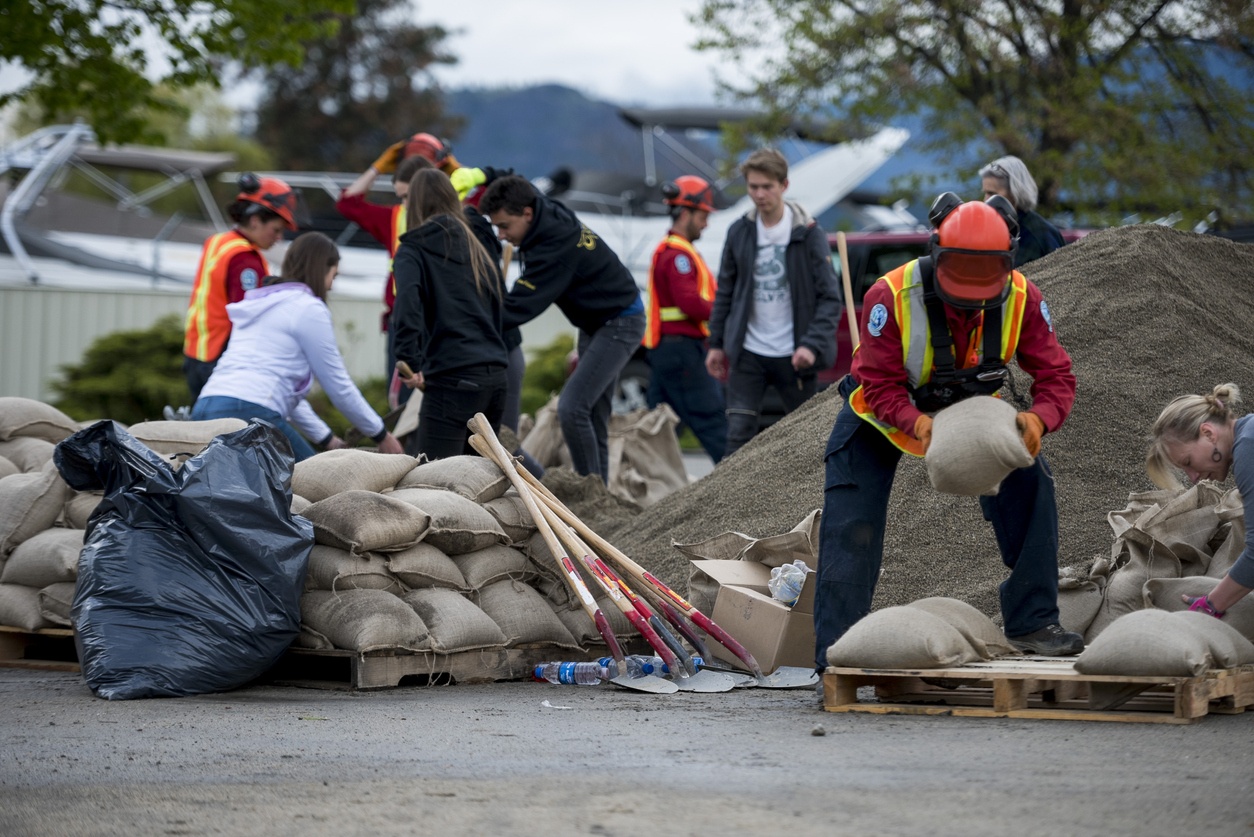The Role of Volunteers in Co-Producing ‘Whole-of-Society’ Solutions

Article reviewed: Mamuji, A., Kenny, C., & Ahmed, S. (2021). Co-production Through Volunteerism in Emergency Management: Drawing Lessons from Canada’s Syrian Refugee Resettlement Initiative. Canadian Journal of Emergency Management 1 (1), 40-65. Available at: https://cdnjem.ca/wp-content/uploads/2020/12/CJEM-v1n1-Mamuji-Kenny-Ahmed.-Co-production-through-volunteerism.pdf
In 2015, Canadian Prime Minister Justin Trudeau called upon all of Canada to help resettle newly-arrived refugees from Syria, a 'whole-of-society' approach that incorporates what is known as co-production. The idea is that citizens, volunteers, community agencies and others come together to both produce and consume public goods (Mamuji, Kenny & Ahmed, 2021). It originates from the work of Elinor Ostrom, 2009 Nobel Laureate in Economic Sciences, which provided many insights into effective governance of the 'commons.'
In this issue of Research to Practice, we review an article about the role of volunteers in this mass resettlement. Told from the perspective of employees in 14 settlement agencies (about half of the organizations in this area), the researchers captured the "experiences and voices of [these employees] as they faced the challenge of managing eager volunteers head on while simultaneously trying to maintain high quality service provision to a population in need" (49).
Throughout the article, the employees provide insights into the challenges faced in volunteer management and the strategies used to promote co-production through volunteerism.
The Involvement of Volunteers in Co-Production
The field of emergency management is particularly suited to study the involvement of volunteers in co-production. According to the researchers:
In times of emergencies, it is not uncommon for thousands of organizations and individuals to flood into countries devastated by disaster, while domestically, local organizations, community groups, and private citizens (often from outside the disaster-affected area) attempt to augment official response activities with offers of support. (42)
Effective co-production hinges on good planning in managing relationships between the key groups involved – government agencies, nonprofit and business organizations, volunteers/citizens and recipients of services. As the researchers noted:
An imbalance in focus on any one of these without adequate attention paid to the experience and expectations of the others will result in resettlement outcomes that are adversely affected, as impacts from mismanagement or challenges with spontaneous volunteers can cascade throughout this triad of relationships. (43)
In the Syrian refugee resettlement initiative, the government took a leading role in setting the tone and calling on all social actors to work together. It provided funds to nonprofit resettlement agencies for "port-of-entry services; translation; temporary accommodations; assistance with locating and moving to permanent accommodations; and referral to other settlement services, amongst other services. … they were also tasked with managing the public's strong desire to play a co-productive role in this initiative, particularly through managing volunteers" (46-7). Settlement agencies were already experienced with these initiatives, having previously co-produced refugee resettlement initiatives (for example, refugees from Kosovo in 1999).
Agencies were overwhelmed with public interest in volunteering, which far exceeded their capacity to review and screen volunteers, interview them, and find appropriate roles for them. As a result, volunteers grew frustrated and some took it on themselves to begin to interact with the refugees. A solution needed to be found.
To overcome these challenges, the resettlement agencies undertook several strategies. They allocated more resources to volunteer management, sought additional funding to improve their volunteer management capacity, and created community and volunteer engagement positions to manage volunteer resources. Long-term volunteers were also called upon to help. And in one resettlement agency, officials created a central touchpoint to direct all potential volunteers.
The Relationship Triad
Using the framework of co-production furthered the study's analysis, and an essential contribution of this study was the elicitation of a triad of relationships. Each relationship was important in itself but individually was not a pre-condition of success. In fact, a holistic approach was vital to nurture each of these three relationships, which include:
1) The relationship between volunteers and the agency they are volunteering for. If healthy, the relationship should be to volunteer labor that is satisfying to the volunteer and efficient and effective from the agency perspective.
2) The relationship between volunteers and the recipients of services. In this case, the aim is for volunteers to effectively assist with providing services while ensuring the safety and well-being of those receiving services.
3) The relationship between the agency and recipients of service. The agency gains an understanding of the resources and management needed to meet the needs of its clients, and clients have a voice and can provide feedback on volunteer engagement.
Lessons for Volunteer Resource Managers
A critical factor in the co-production of services is successful relationship-building. Building productive relationships between volunteers and agencies, between volunteers and clients, and between agencies and clients is essential. By paying attention to this triad of relationships in a holistic way, co-production is more likely to succeed. As noted by the researchers:
Improved volunteer management is not restricted to the relationship between volunteers and response entities themselves but must consider a triad of relationships involving responding entities, volunteers, and impacted victims. Each of these stakeholders is a co-producer of … outcomes, and it is important to ensure that adequate resources are available to manage each relationship for service outputs, quality, and outcomes to be optimally achieved. (62)
Would this approach be suited for the services you provide? Are you doing something similar? Please comment below!
Source
Mamuji, A., Kenny, C., & Ahmed, S. (2021). Co-production Through Volunteerism in Emergency Management: Drawing Lessons from Canada’s Syrian Refugee Resettlement Initiative. Canadian Journal of Emergency Management 1 (1), 40-65. Available at: https://cdnjem.ca/wp-content/uploads/2020/12/CJEM-v1n1-Mamuji-Kenny-Ahmed.-Co-production-through-volunteerism.pdf

